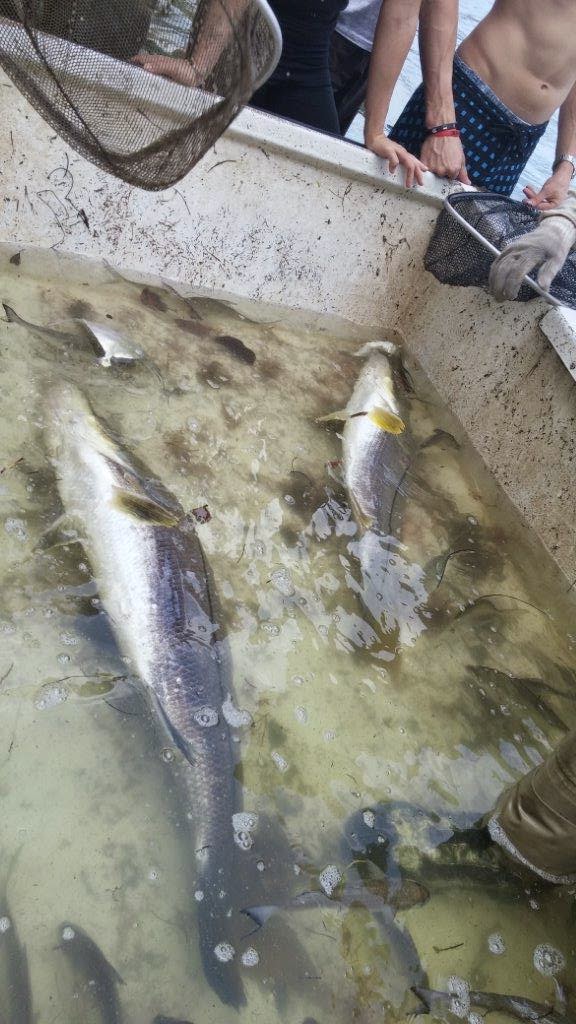The BSC4930 Honors
Field Biology class visited the Florida
Fish and Wildlife Conservation Commission’s (FWC) Tequesta Field
Lab. Biologists gave the class an
overview of the importance of conducting randomized
sampling on fish populations; and prepared the class to
participate in a sample survey.
FWC’s Fish and Wildlife Research Institute conducts this research in order to estimate fish abundance and population trends in seven regions around Florida. You can read all about it here.
FWC’s Fish and Wildlife Research Institute conducts this research in order to estimate fish abundance and population trends in seven regions around Florida. You can read all about it here.
Jim Whittington led the trip with help from JJ
Brodbeck, Anderson Berry and Beau Yeiser. Joy Young helped out at the lab.
Here are several images of our time in the water. Please note, all of the fish were released back into the water after measurements and counts were taken. Thanks to FWC (and Dr. Tom Reinert) for the great learning
experience.
Here are several images of our time in the water. Please note, all of the fish were released back into the water





























